In the world of social media, bite-sized content is the easiest to digest. This makes Twitter—home of the 280-character post—the perfect platform for your audience to consume your marketing messages in full and get to know your brand. To get started, you’ll need to set up your Twitter business account and start implementing the best practices for growth.
We’ll guide you through how you can use Twitter to support your brand and how you can grow your Twitter follower count in this article.
What Is a Twitter Business Account?
Technically speaking, there’s no actual difference between a personal Twitter account and a business Twitter account. Twitter is a unique social media network that allows you to check analytics, run ads, and perform other business functions as soon as you complete the same sign-up process as everyone else.
What makes your Twitter account a business account is when you sign up with your company name and a business email or phone number, with the intention of using it exclusively to promote your brand.
A Twitter business account can be a great addition to your social media marketing strategy. By joining this platform, you unlock the ability to build stronger relationships with your audience by engaging with them as__ your company, rather than on your company’s behalf as a business owner. Whether your brand is snarky like Wendy’s or educational like NASA, your Twitter business account is your chance to build greater brand awareness and loyalty online.
12 Best Ways to Use Twitter for Business
If you’re looking to develop your brand and give it the exposure it needs to grow, you need to be on Twitter. This social media platform has a lot of users—330 million active monthly users, to be exact—which means you have endless opportunities to get seen by and connect with the shoppers who matter most to you.
Of course, you do need to use your Twitter business account wisely to support your brand, rather than hurt it or waste time. This means not strategically showcasing your brand, but also growing your Twitter following intentionally.
With these 12 tips, your Twitter marketing can perfectly supplement your social media and general business goals.
1. Complete Your Twitter Profile
Once you’ve completed the simple sign-up process on Twitter, your next line of action should be to complete your Twitter profile with:
- A profile picture (400×400 pixels)
- A header photo (1500×500 pixels)
- A bio (160 characters)
- Your website link
- Your location (using your HQ, primary city, or founding city works too)
As you do so, be deliberate about how you’re expressing your brand and make sure your profile elements are consistent with your other social media accounts. You can build brand recognition faster when you use the same profile photo, which should feature your logo or an official version of your logo, across all your social media accounts.
Similarly, aligning your header image with the one you’re using on Facebook can help you further support your brand image. Using Adobe Express, you can create eye-catching Twitter headers with your brand colors, font, and logo in the matter of minutes. Or, if you already used Adobe Express to create a Facebook cover photo or LinkedIn banner, simply open the project and tap “Resize” to update the dimensions for Twitter, adjusting your photo elements as needed.

When writing your bio, don’t forget to write in your brand voice while sharing what you do and what makes you different. Take inspiration from your Instagram bio if needed. We also recommend adding some keywords related to your industry to ensure your Twitter business account is searchable on the platform.
Before you move on, double check if your display name and Twitter handle are ideal for your branding. Twitter allows you to change these after signing up, so if you haven’t already, update your display name to your business name and your Twitter handle to the same username you’re using on other social media channels. Just keep your handle short and sweet if this is your company’s first social media account.
2. Tweet With Your Brand Voice
Every great brand has a clear personality. To support your brand, you need to tweet as if your brand is a real person—not multiple social media managers—by honing in on one distinct voice.
Your voice should be consistent with your overall brand voice, but don’t be afraid to have a little more fun on Twitter, more so than you normally would on a platform like LinkedIn. Twitter is an ultra-casual social network where customers would rather your brand be authentic than overly perfect.
Calm, a sleep and meditation startup, provides a great example of brand voice on its Twitter profile. The company always posts positive reminders and affirmations, helping its audience members achieve a better state of mind—just like its app.
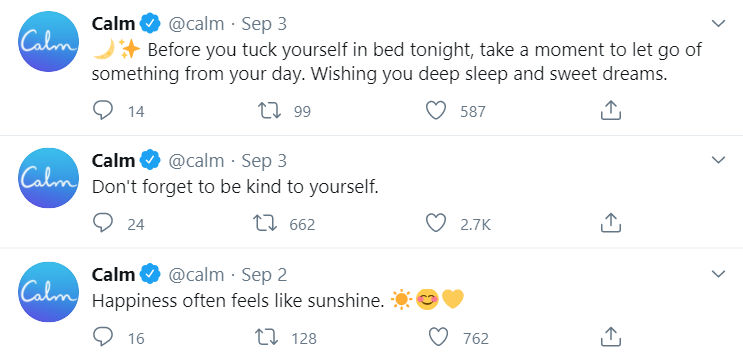
Just like Calm, you can use your brand voice to make your mission shine in little snippets of text.
In addition to aligning its voice to its purpose, Calm also uses a consistent writing style—short and sweet statements, often paired with emojis. Doing so yourself can help make your brand voice even more memorable.
3. Create Engaging Content
A boring post won’t catch the attention of potential new customers who are quickly scrolling their feed. To fully captivate your target audience, you’ll need to create highly engaging content for them to see.
Incorporating video and GIFs into your Twitter strategy can help you engage more users by adding a fun visual element to each of your posts. You can use Adobe Express animations to create short-form videos—perfect for social media—in just one tap.

When you’re ready to post, consider limiting your caption’s length as much as possible. While Twitter does allow you to reach a 280 character limit, a block of text may not be that compelling. Let your video or GIF do some of the talking.
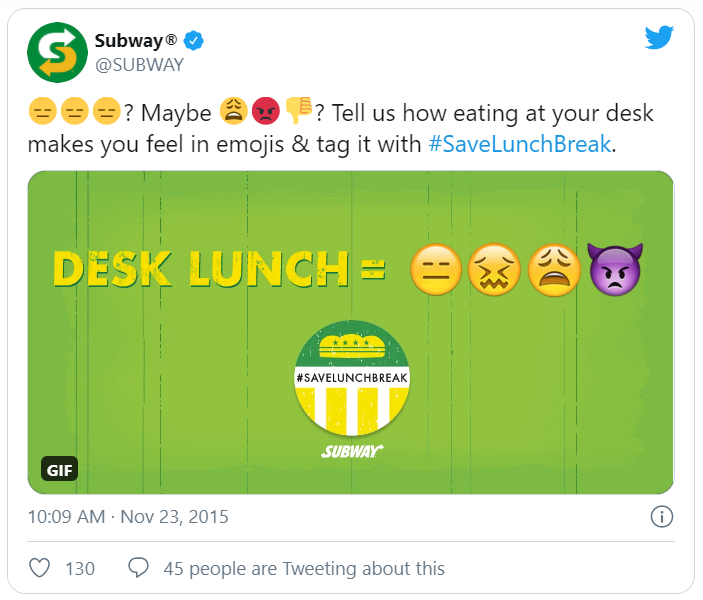
4. Pin a Tweet
Your Twitter content may be completely on-brand, but the first tweet that users see on your profile still may not be ideal. Without any action on your part, your most recent tweet will always be the one that sits at the very top of your page—even if it’s a retweet of another brand’s content.
Luckily, you can be proactive about showcasing your brand by using Twitter’s pinned tweet feature, which allows you to highlight a single tweet—published at any time—at the very top of your profile. Use this feature to show off a new product, promote an upcoming event, share your brand values, or simply showcase a tweet that resonated with many members of your audience.
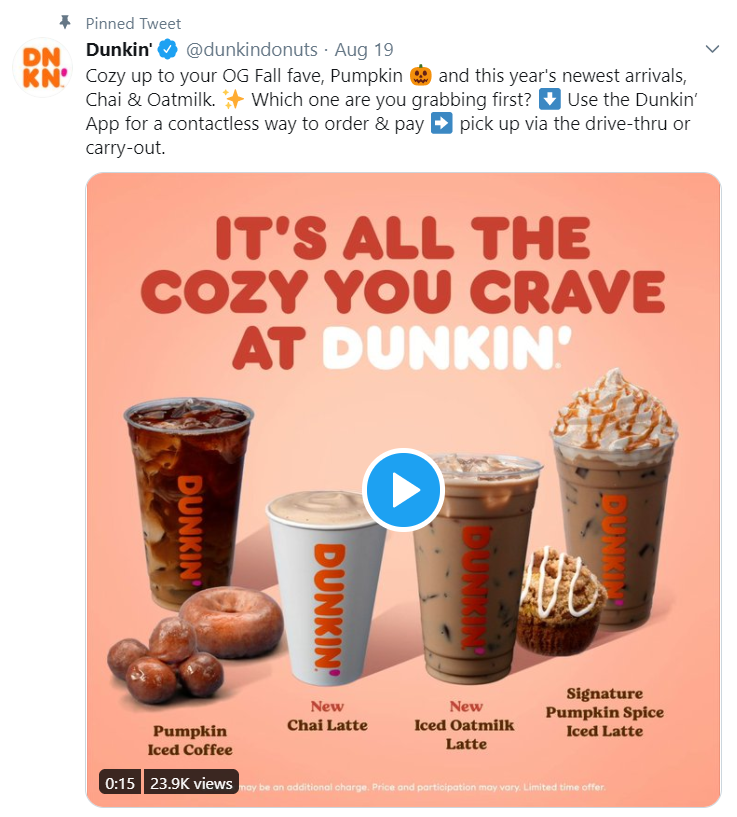
For best results, make sure the post you choose requires no other context to understand, since some profile visitors may not even read your bio before scrolling down to your tweets.
When you have a tweet you want to highlight, pin it by tapping the down arrow on the upper right corner and selecting “Pin to your profile.”
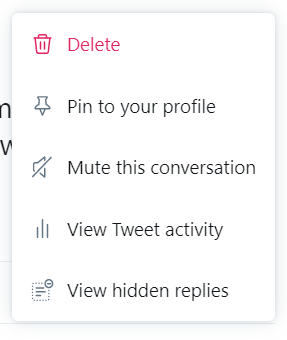
5. Monitor Your Brand Mentions
Twitter is a great platform for keeping up with your brand reputation. Using Twitter’s TweetDeck tool, you can actually see a lineup of all your direct brand mentions—the tweets that tag your Twitter handle—in one place, allowing you to see who’s talking about you and what they have to say, as well as respond.
Of course, the tweets you see are likely to skew positive when you’re only looking at direct mentions. The good news is, you can see the full (and hopefully not brutal) truth by using Twitter’s built-in search bar to look up your company name, your branded hashtags, your product names—anything that customers may be using to write about you. Twitter will then pull up the most relevant tweets, which you can look through in order of popularity or chronologically.
Monitoring your brand mentions is a great way to keep your current and potential customers happy, and instantly take action when damage control needs to be done.
6. Create Public Twitter Lists
Public Twitter Lists are self-curated groups of accounts that you can monitor and other Twitter users can follow. Each List has its own timeline that displays tweets from these selected accounts, regardless of whether you or your List followers are actually following the accounts yourself.
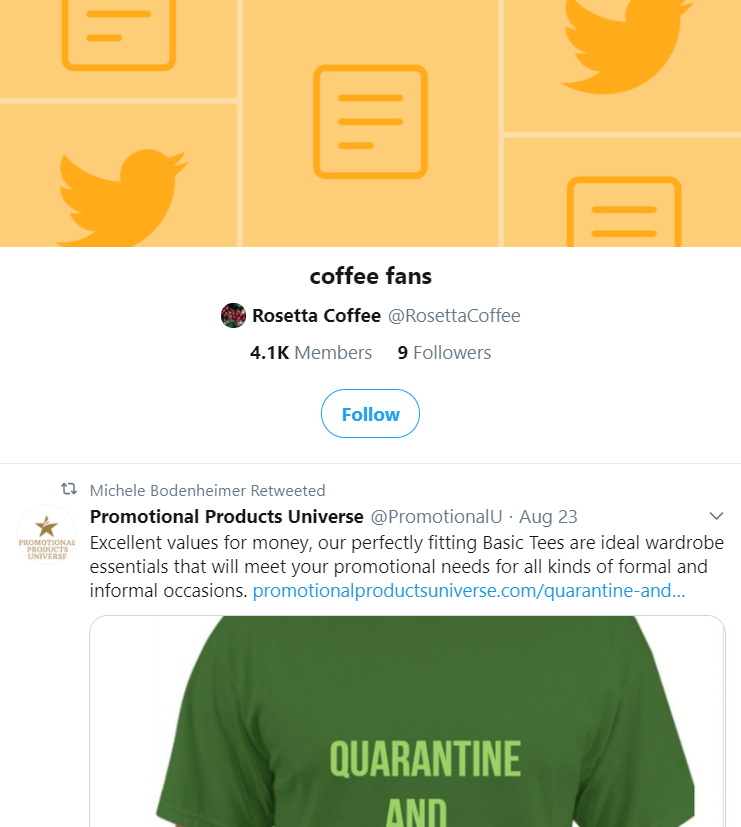
Twitter Lists can be great for branding when you develop Lists that tell users more about who you are. For example, if your small business is located in New Orleans, you may create a list called “Shop Local NOLA” that includes the accounts of local collaborators.
You can also create Twitter Lists with the accounts of your leadership team members, brands and organizations that share your values, and more—the possibilities are endless.
Lists also allow you to connect with new users and companies, since they’ll be notified (and possibly flattered) that you highlighted them.
7. Grow an Honest Twitter Following
Your Twitter branding efforts can only take off if you’re growing your audience, too. New followers mean new eyes on your content—at least, true followers do.
As you’re building your audience, the last thing you want to do is purchase Twitter followers to appear relevant. When you do so, tools like Twitter Audit can quickly tell your customers what percentage of your followers are fake. If that’s not embarrassing enough for a brand, Twitter can actually revoke your access to the app for artificially inflating your metrics in any way—which would reduce your digital marketing options and stunt your growth.
Even when purchased followers are real, they’re not going to be as heavily engaged as the Twitter users you captivate yourself, so make sure to use less seedy methods in your Twitter marketing strategy.
8. Engage With Twitter Users
When you’re the one with an audience to woo, the least you can do is make the first move. Proactively engage with your target audience, as well as industry leaders and other non-competitor brands that may already have followers you want to reach, and re-engage your current audience and collaborators. Schedule tweets that tag relevant accounts and like, retweet, and comment on posts that make sense for your brand to engage with.
Engaging through quote tweets—which are retweets that allow you to add a comment—are particularly great for encouraging Twitter users to have a conversation with you, so you can build a relationship.
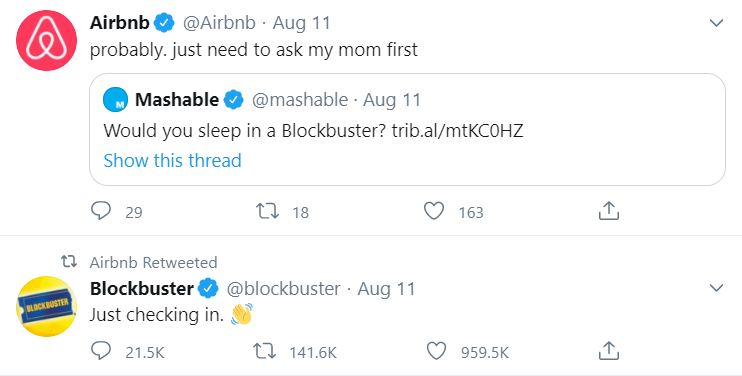
When you do get mentioned in a tweet or a comment on your post, don’t miss the opportunity to engage back.
All of your engagements should be intentional. Don’t just send a thumbs up emoji on every post you agree with. Take the time to write out personalized comments and responses that actually acknowledge each user individually.
9. Add Hashtags to Your Posts
Though big brands often avoid hashtags or stick to branded hashtags, since they have the brand awareness they need, small businesses can benefit greatly from using hashtags in their posts. When you select relevant hashtags—the ones that matter to your target audience and align with what you’re tweeting about—you can gain a large amount of exposure with one tweet.
Create a list of hashtags that you can always pull from each time, while also keeping track of trending hashtags in case there are relevant opportunities to reach an even larger new audience.
A general rule of thumb is to use no more than two hashtags per post. You don’t want to look spammy or desperate.
10. Post at the Right Times
Timing matters on Twitter. If you want to get the most engagement possible on your Twitter business account, tweeting on weekdays during business hours (in your target audience’s time zone) is your best bet. This is when users are most active—though it is important to keep an eye on your company’s metrics.
Every company is different, so even though most Twitter users are active during these times, you may find that your followers are night owls or only heavily active on the weekends. Always adjust your Twitter marketing strategy as needed.
If your audience does fall in line with the average, try to prioritize Wednesday mornings—a top day and time for engagement—for your most important announcements and most impressive tweets.
11. Tweet Consistently
Prioritizing certain times doesn’t mean you should stop tweeting just because it’s not the perfect time. Twitter feeds are fast-paced, and since your content is short, it can fade away pretty quickly.
If you want to use Twitter for business and brand growth, you need to plan on tweeting a minimum of three times per day—though more, as much as five to seven times daily, is always better.
We recommend spacing out your content to reach as many unique users as possible and avoid completely (and annoyingly) taking over your followers’ entire Twitter feeds.
12. Use Twitter Ads
If organic content isn’t helping you grow your Twitter following as quickly as you’d like, you can always invest in Twitter ads.
Twitter ads allow you to promote your account, tweets, and even hashtags to a targeted segment of users, including many who aren’t currently following you.

This marketing tool is an effective way to get in front of new audience members—with no minimum budget—even when you’ve just started your account. You’ll also be able to analyze your Twitter ad performance in real time, so you can better optimize your content for follower growth in the future.
Strategize With Metrics in Mind
As you implement our tips into your Twitter for business strategy, your presence on the platform will help you gain an authentic following and strong brand awareness. However, this doesn’t mean your strategy should be set in stone. Once you start growing, keep an eye on your metrics to understand what content your target audience is responding to the most—including what visuals are grabbing their attention.
Then, update your strategy as needed and take your learnings back to Adobe Express, where you can create the visuals your audience wants to see.



